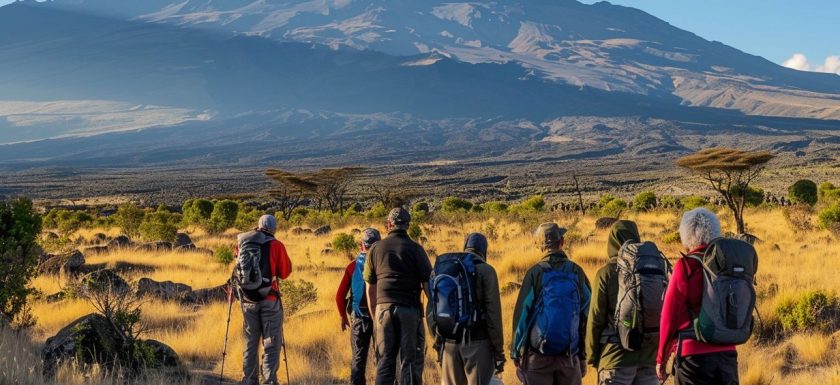
Are you dreaming of conquering Mount Kilimanjaro, but not sure which route to take?
We will explore the factors you need to consider when choosing the perfect Kilimanjaro route for your adventure. From the difficulty level and scenery to accommodation options and budget, we will cover everything you need to know.
We will provide an overview of the seven Kilimanjaro routes, including the Marangu, Machame, Lemosho, Rongai, Northern Circuit, Umbwe, and Shira routes.
Stay tuned to find out how to choose the right Kilimanjaro route for you!
Key Takeaways:
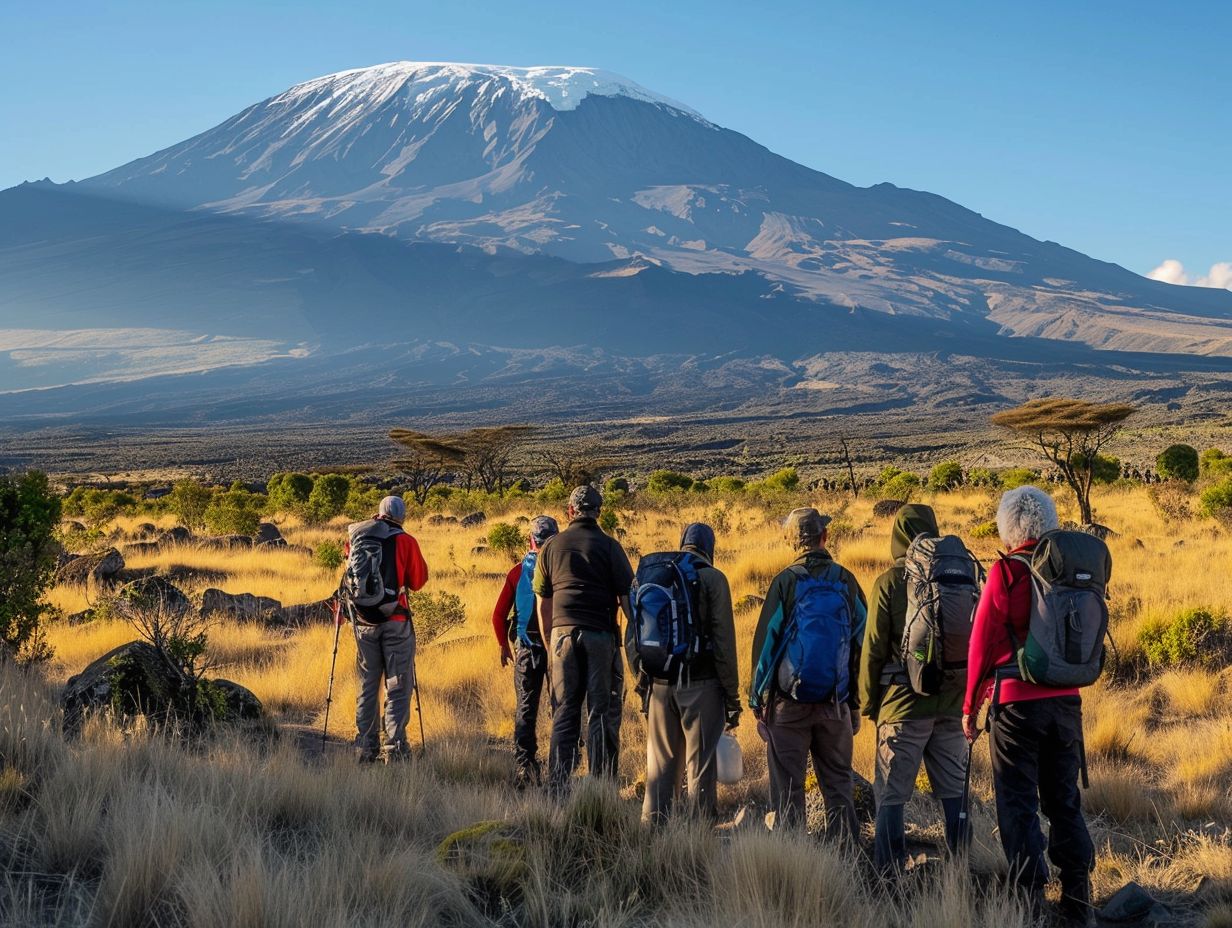
- Consider your difficulty level, scenery, crowds, accommodation, budget, route length, acclimatization needs, and personal preferences when choosing a Kilimanjaro route.
- The seven routes vary in difficulty and offer unique views, traffic, and accommodation options. Consider the Marangu, Machame, Lemosho, Rongai, Northern Circuit, Umbwe, and Shira routes.
- Choose the Kilimanjaro route that best aligns with your goals and abilities. Research and plan ahead to ensure a successful and enjoyable climb.
Factors to Consider When Choosing Your Kilimanjaro Route
When choosing your Kilimanjaro route, several factors should be taken into account to ensure a successful and enjoyable climbing experience.
Considering the varying difficulty levels of different routes is crucial for climbers of all skill levels. The level of scenery and wildlife encounters along the way can greatly enhance the overall experience.
Understanding the typical crowds on each route helps in selecting a path that aligns with your preference for solitude or social interaction. Accommodation options, ranging from basic campsites to luxury lodges, contribute significantly to comfort during the expedition.
Cost is another critical factor, as each route has its price point, including park fees, guide, porter, and accommodation costs. The length and duration of the chosen route influence the physical demands and acclimatization profile required, particularly crucial for altitude adjustment.
Personal preferences such as camping style, group size, and itinerary type should be matched with the chosen route. Taking into consideration your goals, whether it be summiting the peak, enjoying the journey, or a combination of both, guides the decision-making process.
Difficulty Level
The difficulty level of a Kilimanjaro route plays a crucial role in determining the challenge climbers will face on their journey to the summit.
When choosing a route on Kilimanjaro, it is essential to consider factors like altitude, terrain, and overall physical demand. The Machame Route, known for its scenic beauty and varied landscapes, is a popular choice among climbers. Its steep and challenging terrain can pose difficulties, requiring a good level of fitness and endurance.
In contrast, The Marangu Route offers a more gradual ascent, making it relatively easier in terms of physical demands, but lower success rates due to quicker altitude gain. Each route presents its unique set of challenges, highlighting the importance of selecting one that aligns with your capabilities and experience.
Scenery and Views
The breathtaking scenery and panoramic views along the Kilimanjaro routes are a major highlight for climbers seeking a memorable trekking experience.
Each route leading up the majestic Kilimanjaro offers a unique blend of natural wonders and captivating landscapes to delight adventurers. Whether it’s the lush rainforests of the Marangu route, the moon-like terrain of the Rongai route, or the challenging Barranco Wall on the Machame route, every step unveils a new spectacle.
From the mesmerizing Uhuru Peak, the highest point in Africa, to the stunning views of the glaciers glittering under the sun, the journey is truly a feast for the eyes. The diverse flora and fauna along the way add a touch of mystique to the experience, with sightings of endemic species and colorful flowers brightening the trails.
Crowds and Traffic
Considering the crowds and traffic on Kilimanjaro routes is essential for those seeking a more secluded and wilderness-focused climbing experience.
One option to escape the crowded routes is to explore less frequented paths that offer a more solitary and peaceful trekking experience. The impact of navigating through a more serene environment can greatly enhance the sense of connection with nature and the mountain.
Typically, choosing routes like the Lemosho or Northern Circuit can provide adventurers with a more intimate experience with the wilderness and its beauty.
To fully immerse oneself in the tranquility of the climbing environment, planning trips during off-peak seasons can significantly reduce encounters with large crowds.
This strategic approach allows climbers to savor the untouched terrain and breathtaking landscapes without the distractions commonly associated with popular climbing periods. Embracing the silence and pristine surroundings can intensify the emotional and spiritual aspects of the trekking journey.
Accommodation Options
Exploring the diverse accommodation options, from mountain huts to crater camps, can enhance the comfort and convenience of your Kilimanjaro expedition.
Along the Machame Route, trekkers often stay in A-frame huts equipped with bunk beds and basic amenities, providing a rustic yet cozy atmosphere amidst the lush forest setting. For those seeking a more luxurious experience, lodges along the Lemosho Route offer spacious rooms, hot showers, and gourmet meals, allowing guests to unwind in style after a day of hiking.
In contrast, the Shira Route features high-altitude camps with minimal facilities but awe-inspiring panoramic views, giving adventurers a true wilderness experience. The Northern Circuit boasts private tented camps, each with en-suite bathrooms and attentive staff catering to guests’ every need, ensuring a touch of luxury in the midst of the rugged landscape.
Cost and Budget
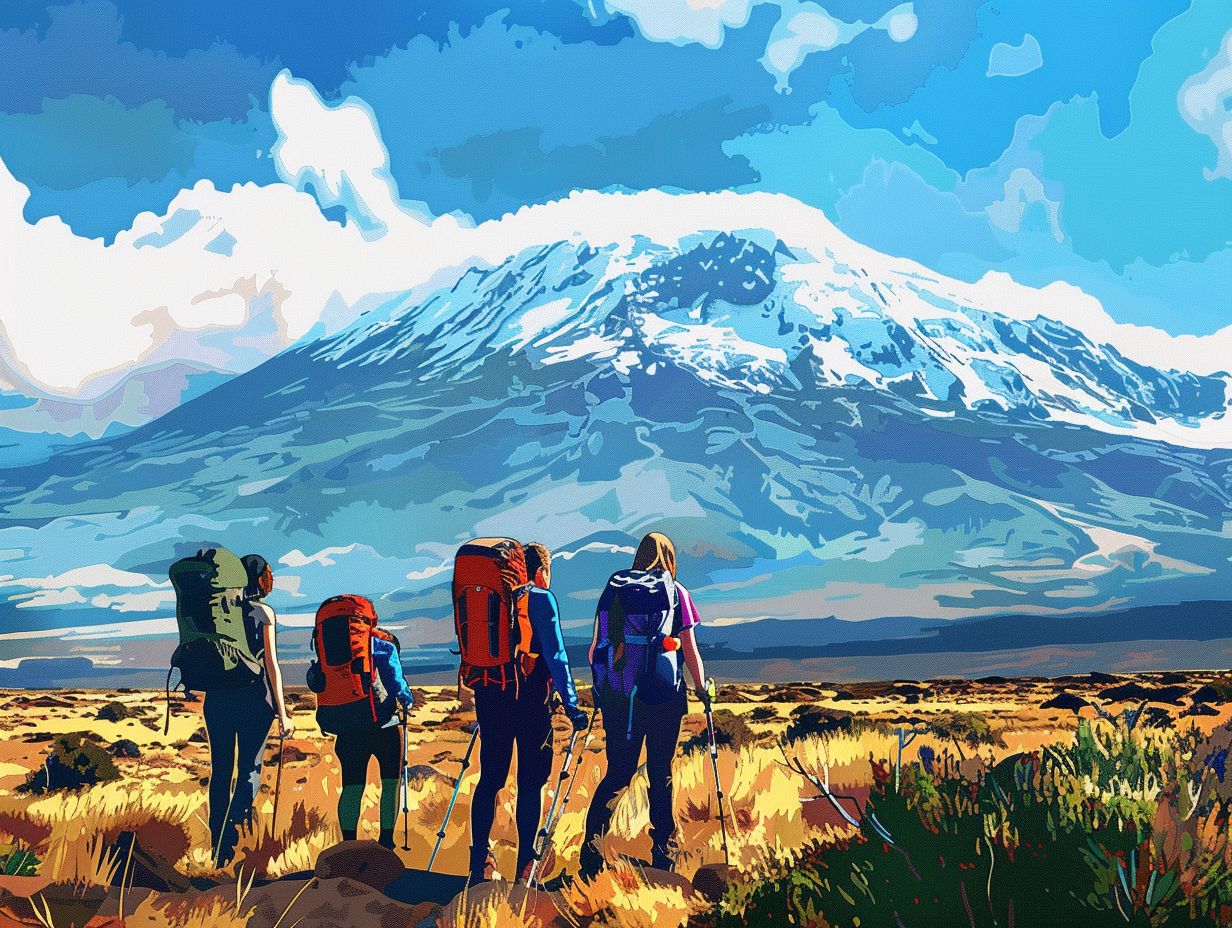
Understanding the cost implications and budget requirements of climbing Kilimanjaro is essential for effective trip planning and financial management.
When considering the financial aspects of undertaking a Kilimanjaro expedition, it’s crucial to break down the costs into categories like permits, guides, gear, travel, and extras. The most significant expense usually stems from the park fees and permits, which can vary based on the route and duration of the trek.
Hiring an experienced guide is a wise investment for safety and navigation on the mountain but adds to the overall cost. Travel expenses such as flights, accommodation, and airport transfers also need to be factored in. Creating a detailed budget and sticking to it can help avoid unexpected financial strain during the adventure.
Length of Route
The length of the chosen Kilimanjaro route significantly impacts the duration and intensity of the trekking adventure, influencing both physical and mental preparations.
Each of the Kilimanjaro routes offers a unique experience based on the expedition timeline, with durations ranging from 5 to 9 days. For instance, the Marangu route, also known as the ‘Coca-Cola route,’ is one of the shorter treks, typically completed within 5-6 days.
On the other hand, the Lemosho route, regarded for its picturesque views, covers a longer distance and usually takes around 7-8 days to summit. The challenging Machame route is slightly shorter than Lemosho but still requires 6-7 days for completion.
Acclimatization Profile
Understanding the acclimatization profile of each Kilimanjaro route is crucial for ensuring climbers’ safety and well-being during the ascent to the summit.
Each route on Kilimanjaro presents unique challenges and opportunities for acclimatization. For example, the Machame route, known for its scenic beauty, allows for gradual altitude adjustment as climbers ascend through different vegetation zones.
On the other hand, the Marangu route, while offering huts for accommodation, has a more rapid ascent profile, requiring careful monitoring of altitude sickness symptoms.
Regardless of the chosen route, acclimatization breaks are essential to allow the body to adjust to the decreasing oxygen levels at higher altitudes. These breaks often involve rest days at certain campsites to aid in the adaptation process.
Personal Preferences and Goals
Aligning your personal preferences and goals with the characteristics of Kilimanjaro routes is essential for a fulfilling and tailored climbing experience that matches your sense of adventure.
When selecting the right Kilimanjaro route, it’s crucial to consider factors such as altitude, difficulty level, scenery, and overall trekking experience. For those seeking a more challenging ascent and a sense of accomplishment, routes like the Machame or Lemosho might be ideal, offering steeper terrain and longer durations.
On the other hand, if you prefer a more gradual climb with stunning views, the Marangu route, known as the ‘Coca-Cola’ route, could be a better fit. Understanding your adventure expectations and expedition motivations will guide you towards the route that resonates most with you.
Overview of the Seven Kilimanjaro Routes
Embark on a comprehensive exploration of the seven distinct Kilimanjaro routes, each offering a unique pathway to the majestic summit of Mount Kilimanjaro.
The Marangu route, also known as the “Coca-Cola” route, stands out for its comfortable huts with basic amenities along the way, making it a popular choice for trekkers seeking more comfort.
Machame route, often referred to as the “Whiskey route is famed for its diverse landscapes from lush rainforest to alpine desert, providing trekkers with breathtaking views along the journey.
On the Lemosho route, adventurers can experience a gradual ascent which aids in acclimatization, while enjoying the stunning scenery of Kilimanjaro’s western side.
Rongai route on the northern side offers a more remote and less crowded trek, showcasing a unique perspective of the mountain.
Marangu Route
The Marangu Route, also known as the ‘Coca-Cola Route‘, is distinguished by its hut accommodations and is a popular choice for climbers aiming to reach the summit of Kilimanjaro.
One of the unique aspects of the Marangu Route is the availability of hut accommodations along the trek, providing a more comfortable option for climbers compared to camping. These simple huts offer basic amenities and can be a welcoming sight after a day of challenging trekking.
As climbers ascend towards the summit, they experience varied landscapes from lush rainforests to moorlands, giving a diverse and captivating trekking experience. Summiting Kilimanjaro via the Marangu Route is a memorable achievement, with the final push to Uhuru Peak offering breathtaking panoramic views of the surrounding landscapes.
Machame Route
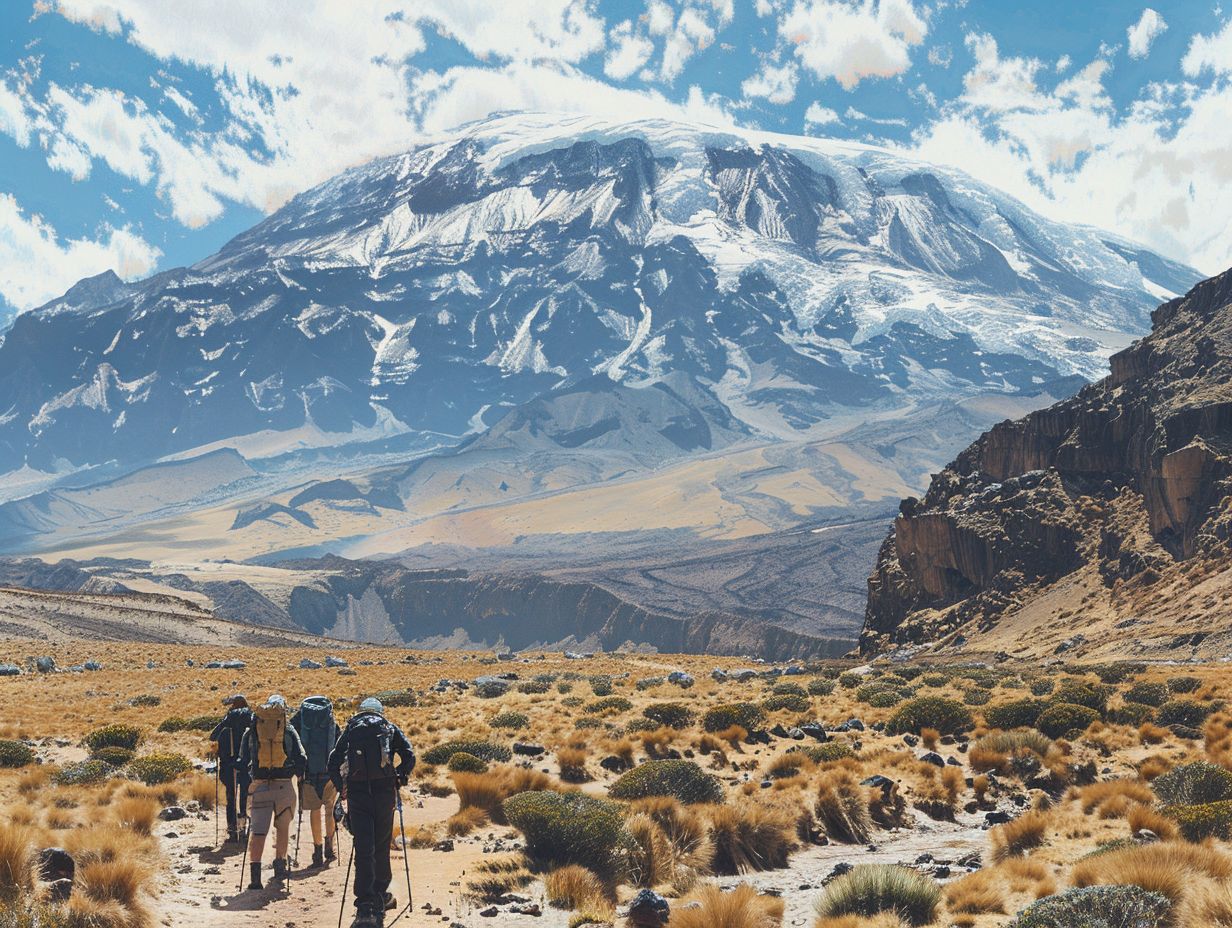
The Machame Route, often referred to as the ‘Whiskey Route’, is renowned for its stunning landscapes and challenging summit night that tests climbers’ determination and endurance.
Ascending up the Kilimanjaro’s southern face, trekkers on the Machame Route are treated to a diverse range of environments, from lush rainforests to alpine deserts, offering a truly immersive experience into the mountain’s varied ecologies.
The night before the summit push, also known as summit night, is a grueling test, characterized by steep, rocky terrain and freezing temperatures, where climbers rely on their mental fortitude and physical preparedness to overcome the final obstacle to Uhuru Peak. Filled with challenges and gratifying sights, this route demands respect and determination from those daring enough to embark on its journey.
Lemosho Route
The Lemosho Route offers breathtaking scenic views and boasts one of the highest summit success rates among the Kilimanjaro ascent options, making it a favorite among climbers seeking both beauty and achievement.
What sets the Lemosho Route apart is its gradual ascent profile, allowing climbers to acclimatize effectively and increase their chances of reaching the summit successfully. The route’s diverse landscapes, from lush rainforests to alpine deserts, provide a unique experience for adventurers.
One of the most notable features of this route is the opportunity to witness stunning vistas from the Shira Plateau, offering panoramic views of the surrounding plains and distant peaks, creating unforgettable moments for climbers.
Rongai Route
The Rongai Route provides a tranquil trekking experience, allowing climbers to acclimatize gradually while immersing themselves in the untouched wilderness of Kilimanjaro’s northern slopes.
The trail on the Rongai Route quietly meanders through diverse landscapes, from dense forests to open moorlands, offering a captivating journey that showcases Kilimanjaro’s natural beauty.
Acclimatisation becomes more manageable due to the route’s gentle ascent, allowing climbers to adjust to the increasing altitude comfortably. The unique advantage of this path is its relatively lower traffic compared to other popular routes, providing a more secluded and peaceful experience in harmony with nature’s rhythms.
Northern Circuit Route
The Northern Circuit Route offers climbers an extended adventure on Kilimanjaro, featuring diverse landscapes, exceptional summit views, and a less-traveled pathway to the summit.
Beginning at the western edge of the mountain, this route provides a unique opportunity to immerse oneself in the untouched beauty of the Kilimanjaro wilderness. As trekkers ascend through lush rainforests, alpine meadows, and barren lunar landscapes, they are treated to a cornucopia of natural wonders.
The highlight of the journey is undoubtedly reaching Uhuru Peak, the highest point in Africa, where the panoramic views stretch as far as the eye can see. What sets the Northern Circuit apart is the sense of solitude and tranquility it offers, allowing climbers to connect with nature on a profound level.
Umbwe Route
The Umbwe Route is renowned for its challenging ascent and direct approach to the summit, offering adrenaline-seeking climbers a thrilling adventure filled with daring climbs and rewarding summit experiences.
Known for its steep inclines and rugged terrain, the Umbwe Route demands both physical and mental strength from those brave enough to tackle its unforgiving paths. Adrenaline pulses through your veins as you navigate through sections like the Barranco Wall, a pinnacle of excitement and challenge on this route.
With its fewer crowds compared to other routes, climbers on the Umbwe Route often feel a deep sense of connection with the raw, untouched beauty of Kilimanjaro’s landscapes. The allure of conquering this challenging pathway lies not just in reaching the summit, but in the personal growth and accomplishment that come with overcoming its obstacles.
Shira Route
The Shira Route offers climbers a unique perspective of Kilimanjaro, traversing through varied landscapes and providing stunning views of Mount Meru and the surrounding high-altitude terrain.
One of the distinctive features of the Shira Route is its connection to Mount Meru, a dormant stratovolcano that adds to the allure of the trek.
As climbers ascend, they are rewarded with panoramic vistas that showcase the rugged beauty of the landscape, with snow-capped peaks and expansive valleys stretching out below.
Experiencing these high-altitude environments can be both physically demanding and mentally rewarding, offering a true test of strength and determination amidst the breathtaking surroundings.
Conclusion: Choosing the Right Kilimanjaro Route for You
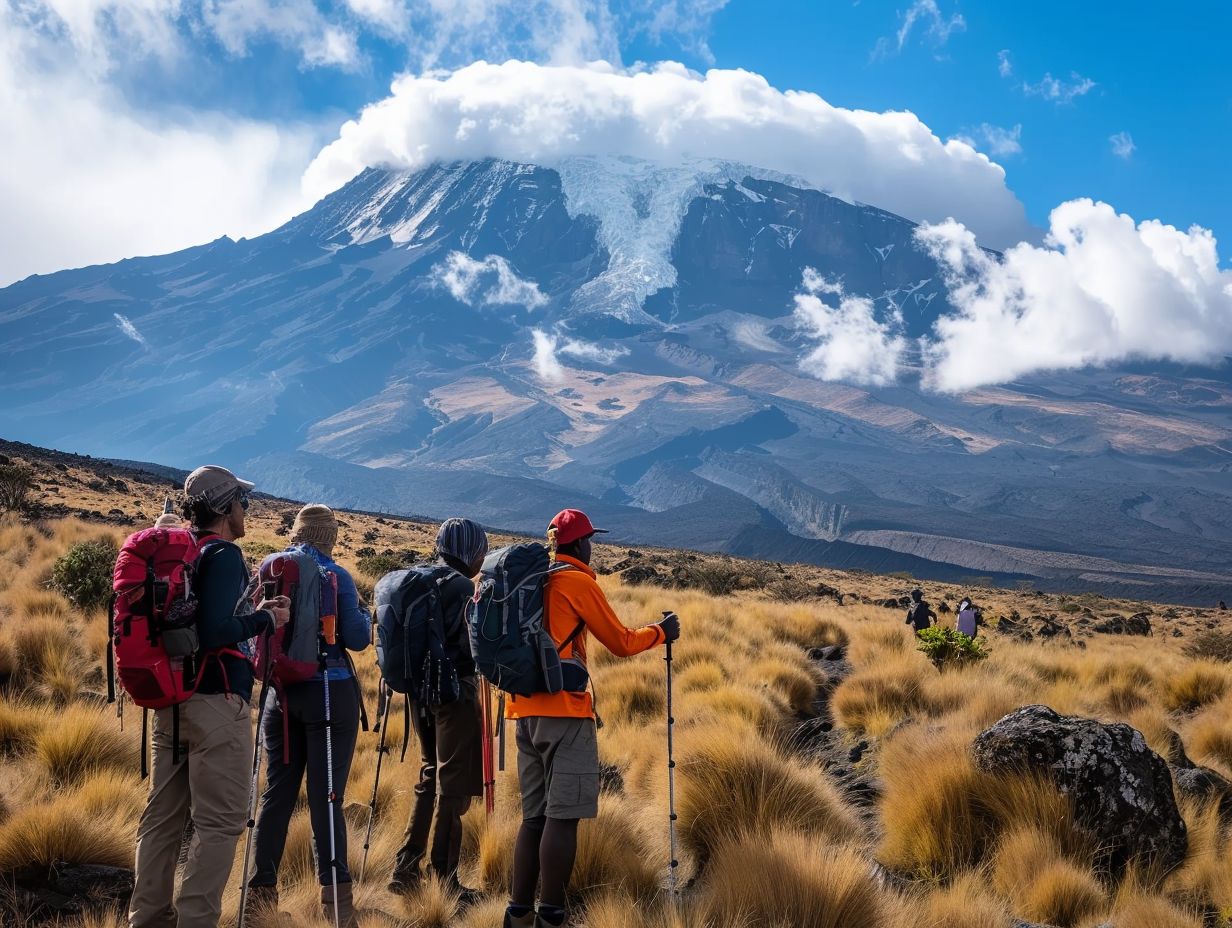
Selecting the ideal Kilimanjaro route tailored to your preferences, abilities, and climbing goals is the key to a successful and rewarding adventure to the ‘Roof of Africa’.
When determining the best route for your Kilimanjaro ascent, consider factors such as the level of difficulty, length of the climb, scenic beauty, and traffic on the trail.
Machame Route is popular for its stunning views and offers an excellent balance between challenge and accessibility. On the other hand, Marangu Route is known for being the only route with hut accommodations, making it a good choice for those who prefer more comfort during the trek.
Incorporating these elements into your decision-making process will ensure a memorable and fulfilling journey.
Frequently Asked Questions
1. How do I choose the best Kilimanjaro route for my trek?
Choosing the right Kilimanjaro route depends on factors such as your fitness level, time constraints, and personal preferences. It is important to research and consider each route’s difficulty, scenery, and success rates before making a decision.
2. What are the differences between the Kilimanjaro routes?
The Kilimanjaro routes differ in terms of length, difficulty, scenery, and success rates. For example, the Machame route is longer and more challenging, but offers stunning views of the mountain. The Marangu route is shorter and less strenuous, but has a lower success rate.
3. How long does it take to complete each Kilimanjaro route?
On average, it takes 6-8 days to complete the Machame, Lemosho, and Northern Circuit routes. The Marangu route can be completed in 5-6 days, while the Rongai route takes 6-7 days. It is important to choose a route that allows for proper acclimatization to increase your chances of reaching the summit.
4. Are there age or fitness requirements for each Kilimanjaro route?
While there are no specific age requirements, it is recommended that trekkers are at least 12 years old and in good physical condition. Some routes, such as the Western Breach route, require technical climbing skills and are only suitable for experienced climbers.
5. Is there a difference in cost between the Kilimanjaro routes?
Yes, there is a difference in cost between the Kilimanjaro routes. The Marangu route is the most affordable option, as it offers dorm-style accommodations, while the other routes offer private tents. The Machame and Lemosho routes are typically more expensive due to their longer duration.
6. What factors should I consider when deciding on a Kilimanjaro route?
When choosing a Kilimanjaro route, consider factors such as distance, difficulty, scenery, success rates, and personal preferences. It is also important to research the tour operators and guides who offer each route to ensure a safe and enjoyable trekking experience.